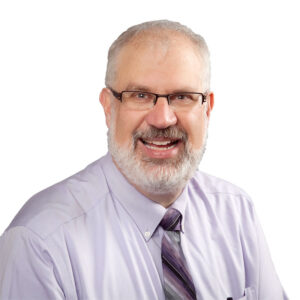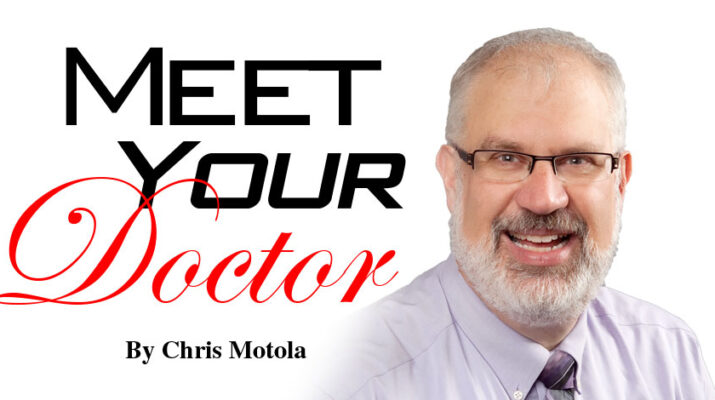New funding and designation will help further research into intellectual and developmental disabilities, says chief of child neurology at Golisano Children’s Hospital
By Chris Motola

Q: The University of Rochester was recently designated as an Intellectual and Developmental Disabilities Research Center (IDDRC) by the National Institute of Child Health and Human Development. Can you give us a rundown of what that means?
A: This is a newly developed IDDRC center. And it is one of 14 in the country funded by the National Institute of Child Health and Human Development. These are really historically important centers, so it’s a real honor to be funded through them. In a way, it’s a cap of many years, even decades of focus on both clinical patients and decades of research in intellectual and developmental disabilities. It’s a complex kind of grant in that what it does is support a lot of core functions that other people can take advantage of. It supports identifying research participants, characterizing those participants, provides support for doing certain types of research: neuro-imaging research, physiology, developing and testing animal models of intellectual developmental disabilities. But most importantly, it brings all these things together. It also supports things that can be leveraged for providing care for individuals with developmental disabilities, but most importantly pushes new treatments and provides increasing opportunities for patients and families to participate in research for the development of new treatments.
Q: What’s your role in the IDDRC?
A: I’m the co-director along with John Foxe. We oversee the whole program. Each core function has a director that’s independent in a way, but they also report to us. So it’s really co-directing that. Dr. Foxe is a neuroscientist. I’m also a neuroscientist, but I’m also a child neurologist. So I’m the clinician co-leader and he’s overseeing more of the scientific aspects.
Q: It seems like the knowledge base on developmental disorders is developing very rapidly in recent years, particularly where autism is concerned. It seems like they’re surprisingly common.
A: So two things. One, overall intellectual and developmental disabilities are quite common. What we’ve learned is that for something like autism, autism has certain features that define it, but the specific underlying causes may differ from person to person. Some of these are relatively common. Autism itself is quite common, but many individual causes of autism can be quite rare. So one of our areas of focus is on rare and neglected disorders that may affect a small number of people, but if you take all of them together, they affect a sizable portion of the population. And a lot of the discovery right now is identifying both common and rare causes and developing treatments that may be focused on those specific causes.
Q: Can you give an example of one of those causes?
A: One of the core projects of this center is focused on something called Batten disease. Batten disease is quite rare. There about 13 or 14 forms of it, all of which are quite rare. But this is one of the most important causes of progressive development disability, where children lose cognitive and physical function over time. So even though it’s quite rare, the things we learn from studying it and the models we develop have important implications for more common disorders. So we’re really working to identify things that can be focused on very specific disorders, but also where the approaches can benefit a large number of people.
Q: What might these approaches look like in practice?
A: So if there’s a number of different disorders that all cause speech and language impairment, the approaches that we might use to help with communication in those individuals may not depend on what the underlying cause is and may be globally applicable to a large number of individuals. But there may also be treatments that work for some sub-groups but not others. So the research center really helps to move treatments forward in both categories: those that are very broad and those that are really focused on very specific issues.
Q: In terms of definitions of success, what’s considered a successful outcome in the context of developmental disability?
A: Ultimately, the big picture goal is to be able to prevent intellectual and developmental disabilities when possible. To treat underlying causes so we can minimize the impact of those conditions, and in situations where we can’t treat the specific causes, to provide interventions that will maximize independent functions and maximize quality of life for individuals with these conditions. So treatment development progresses along many different lines. So conditions where we’re trying to identify and prevent causes all the way conditions where we can’t alter the underlying cause but can still affect the quality of life for these individuals.
Q: And I take it this includes adults who may have missed being diagnosed as children?
A: So one of the important things about our center is that we’re looking across lifespan. Many of these disorders are thought of as childhood disorders, but there are many adults who live with intellectual and developmental disabilities, so we have many programs focused on caring for adults with intellectual and developmental disabilities. It’s possible that some of the treatments coming in the future may be applicable to adults as well as children.
Q: Since Rochester is one of only a handful of these centers, what impact do you think it will have on the city’s research community?
A: I think it’ll have a tremendous impact. The University of Rochester has been one of the UCEDDs [University Center for Excellence in Development Disabilities]. It’s also been a LEND [Leadership Education in Neurodevelopmental Disabilities]. This is kind of the third leg of that stool, to have the IDDRC designation. This really focuses on the research aspect, and I think it’s going to provide more infrastructure to help make current research more efficient and effective. It’s also a tremendous foundation on which to build research growth to allow support for people who are extending their work into new areas. And it serves as a magnet to attract more people to the University of Rochester to join our faculty and help develop our programs.
Lifelines
Name: Jonathan Mink M.D., Ph.D.
Position: Chief of child neurology at Golisano Children’s Hospital
Hometown: St. Paul, Minnesota
Affiliations: University of Rochester Medical Center; Golisano Children’s Hospital
Education: Washington University School of Medicine, MD, Ph.D.
Organizations: Child Neurology Society; Society for Neuroscience; American Academy of Neurology; American Academy of Pediatrics
Family: Wife (a pediatrician); daughter, son
Hobbies: Canoeing, hiking, music, cooking
In the News
The University of Rochester has been designated an Intellectual and Developmental Disabilities Research Center (IDDRC) by the National Institute of Child Health and Human Development (NICHD). The award recognizes the medical center’s national leadership in research for conditions such autism, Batten disease and Rett syndrome, and will help will translate scientific insights into new ways to diagnose and treat these conditions, and provide patients and families access to cutting edge care. The IDDRC at the University of Rochester will be led by John Foxe, Ph.D., director of the Del Monte Institute for Neuroscience, and Jonathan Mink, M.D., Ph.D., chief of child neurology at Golisano Children’s Hospital. The designation is accompanied with more than $6 million in funding from NICHD.

